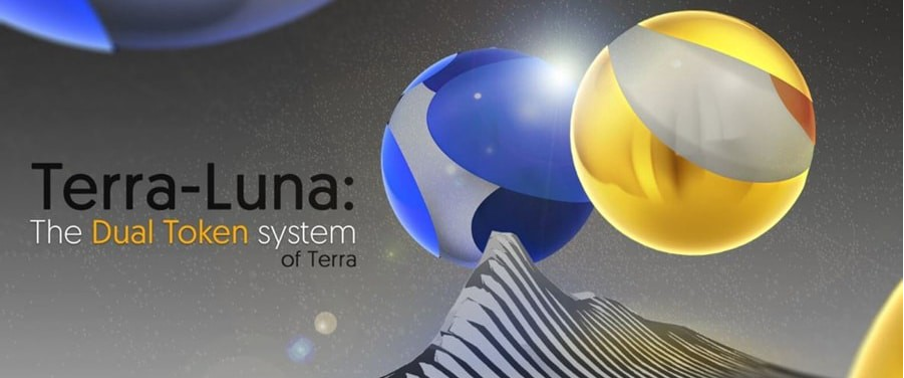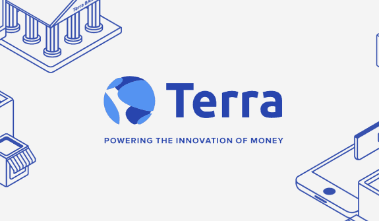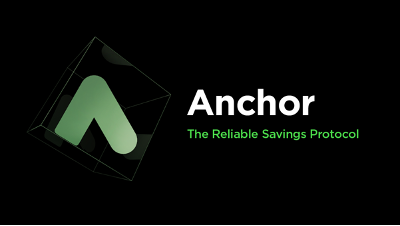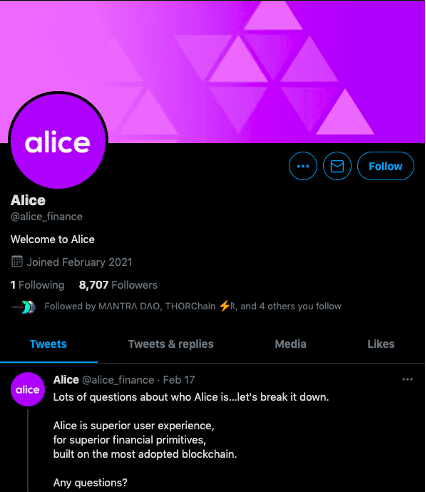
Terra is a smart contract-enabled blockchain that harnesses the utility of the Cosmos project CosmWasm’s technology. Powered by the native Terra LUNA coin and the TerraUSD coin (UST), the Terra blockchain has become a compelling building ground for blockchain-based applications. Terra has created an all-in-one payment solution using a variety of user-friendly tools to enable businesses to implement blockchain technology to accept and automate Terra payments without intermediaries. Furthermore, Terra utilizes a dual coin system to incentivize arbitrage opportunities. This has helped contribute to the growth and adoption of the Terra network and both the LUNA coin and the UST coin. Also, Terra is responsible for the development of several successful crypto projects, including Mirror Protocol and Anchor Protocol. Moreover, the success of these projects has incentivized the rapid adoption of the Terra LUNA coin.
In this article, we’re going to dive deep into the Terra ecosystem and the Terra blockchain. Moreover, we’ll explore the roles the Terra LUNA coin and TerraUSD coin play across the network of Terra protocols.
If you’re new to blockchain technology and want to learn more, you’ve come to the right place! Ivan on Tech Academy is full of educational materials, video tutorials, and an interactive student community to help you stay motivated. To discover how blockchain works on a foundational level, make sure to see the Blockchain & Bitcoin 101 course at Ivan on Tech Academy. This is the best place to start on your blockchain journey. Following this, try our Ethereum 101 course to explore the fundamental differences between Bitcoin and Ethereum!
What is Terra LUNA?
The Terra blockchain is the backbone of the various applications built by Terraform Labs. Terra has formed many partnerships with industry leaders sector-wide. Furthermore, Terra has come up with an innovative solution for creating multi-collateralized stablecoins in a decentralized way.

Launched in April 2019, the Terra mainnet first introduced the TerraKRW token (KRWT), a stablecoin price-pegged to the Korean Won currency. KRT is used across various applications for payment settlements.
The initial private sale for LUNA coin raised $32 million, with investments from centralized exchanges including Binance, Huobi, and OKEx. Of this sale, 10% was reserved for Terraform Labs’ future development, with a further 20% allocated for project participants and employees. Furthermore, 20% of the private sale was reserved for the Terra Alliance, with another 20% going towards price stability reserves, 26% to project backers, and the remaining 4% allocated toward genesis liquidity.
Background
The Terra blockchain was created by Korean blockchain firm Terraform Labs, which was incubated by the Terra Alliance. The Terra Alliance is a group of 15 eCommerce companies based around East Asia. Established by Daniel Shin and Do Kwon in 2018, Terraform Labs has an extensive background in eCommerce and finance. Shin is a graduate of the Wharton School of Economics and has established several other successful companies in various sectors. These include the Chai payments application, eCommerce platform TMON, and startup incubator Fast Track Asia.

Furthermore, Do Kwon is a computer scientist and Stanford University graduate who recently made it onto the Forbes Under 30 list, a list of the most successful young entrepreneurs across the world. Kwon previously worked at Microsoft as part of the Natural Language Processing team. Also, Kwon founded peer-to-peer telecommunications company Anyfi.
How Does the Terra Blockchain Work?
The Terra Blockchain was created using the Cosmos software development kit (SDK) and utilizes the Tendermint Proof-of-Stake (PoS) consensus mechanism. The Cosmos SDK was designed to enable developers to build and launch interoperable blockchain applications quickly and efficiently. Terra has a cap of 100 validators across the network, which means that it is more centralized than many other PoS-based blockchains.
Transactions on the Terra blockchain take seconds to settle. Furthermore, the cost of transaction fees when interacting with smart contracts is considerably lower than the gas fees on Ethereum. This makes it an appealing alternative for developers seeking smart-contract-enabled blockchains.
TerraUSD (UST)
TerraUSD (UST) is a stablecoin built on the Terra blockchain. Following a successful launch and increased adoption of Terra, the printing of UST commenced in September 2020. UST is not technically collateralized. Rather, the creation of UST is enabled by the burning of the LUNA coin.

The value of UST is determined by the demand and supply for the asset, and fluctuates accordingly. When the price of UST rises above a dollar, holders of the LUNA coin can sell their LUNA for UST. Also, LUNA can be exchanged for the equivalent dollar amount of UST, creating an interesting arbitrage opportunity. When this occurs, new UST coins are minted as the market cap reduces until the UST coin reaches its one-dollar price peg.
Furthermore, as the UST supply increases, it tends to lead to upward price movement for LUNA. This is because when the supply contracts, UST that has fallen below the one-dollar price peg can be sold for LUNA to make a profit. In turn, this brings the price of UST back to its target of one dollar. When this occurs, an amount of LUNA is burned, making it more scarce, and therefore more valuable. The remaining LUNA is gathered in the community pool.
With this increased utility, as TerraUSD (UST) becomes easier to spend, the price of UST could remain above a dollar. This assumed risk is one of the many reasons people are looking at LUNA and UST as alternative investment vehicles.
In recent months, the circulating supply of TerraUSD has doubled, making it the 17th largest stablecoin by market cap at the time of writing. This shows tremendous demand for the Terra LUNA coin and bodes well for the future of the project.
Terra LUNA Coin (LUNA)
The native Terra LUNA coin is the lynchpin of the entire Terra network. The burning of LUNA coins helps to stabilize the Terra stablecoin ecosystem and incentivize usage. This harmonious relationship between LUNA and UST is representative of the relationship between Earth and the Moon, as both assets rely on each other for stability and rotation.

Furthermore, governance of the Terra network is conducted by Terra LUNA holders. LUNA holders can vote on proposals to make changes to various parameters of the Terra protocol. Also, LUNA holders can vote on adjustments to reward structures and other directional changes. Furthermore, the Terra community pool is in place to accumulate funds to build more decentralized applications (dApps) that use UST. As this occurs, more UST can be printed in a process known as seigniorage.
The LUNA coin has seen tremendous upward price movement throughout 2021. Ranked at #17 on CoinGecko at the time of writing, the LUNA coin has a market cap of $6.4 billion, trading at around $16.20.
Protocols Built on the Terra Blockchain
Below we’ve listed some of the most highly adopted and successful protocols built on the Terra blockchain by Terraform Labs.
Mirror Protocol
One of the decentralized applications (dApps) using the TerraUSD stablecoin is Mirror Protocol. The platform creates the opportunity to mint fungible “synthetics” that track real-world asset prices in real-time. This can then facilitate synthetic stock trading, allowing exposure to stocks without actually holding any shares. Mirror synthetics have been designed to encourage bringing real-world assets onto the blockchain, intended to be used as key components in smart contract applications.

Mirror Protocol has been created on both Terra and CosmWasm, using TerraUSD as the base asset. Minting Mirror synthetic assets (mAsset) requires Mirror Protocol users to lock up 150% of the mAsset value in TerraUSD as collateral. Collateral will be liquidated if the price of the mAsset rises above a collateralization threshold.
Prices of Mirror assets (mAssets) are determined through oracles, providing real-world asset price feeds every 30 seconds. Users are able to trade mAssets through the Terraswap exchange. The Mirror protocol is governed by holders of the native MIR token. MIR tokens have been fairly distributed through liquidity mining, with no pre-sale or team allocation. By joining the Mirror Protocol community, users can have a voice on important updates to the protocol through holding MIR tokens.
To discover more about how to use stablecoins in decentralized finance (DeFi), check out the DeFi 101 course at Ivan on Tech Academy! Here, you’ll discover the Digital Financial Stack, and how to operate web3 wallets like MetaMask. Following this, you can discover how to take out flash loans, yield farm safely, and create decentralized hedge funds, all through our DeFi 201 course. Ivan on Tech Academy teaches you everything you need to know about getting started in the world of decentralized finance!
Anchor Protocol
Launched in early March 2021, Another successful Terra-hosted decentralized application (dApp) is Anchor Protocol. The Anchor savings protocol is targeting non-crypto-natives to give them the chance to use a decentralized finance (DeFi) savings product that is simple and easy to use. Anchor Protocol offers a vast array of staking products with individual risk/reward ratios.

The Anchor Protocol savings infrastructure has some key features to ensure secure stable returns on Terra deposits. This includes the “Principal protection”. In short, the Principal protection is a liquidation protocol that automatically liquidates collateral positions when a loan is at risk. An additional feature of Anchor Protocol is the capability of instant withdrawals with no lock-up period required.
Anchor Protocol offers users a stable interest rate for depositing their Terra assets. The yield generated from Anchor is “powered by block rewards of major Proof-of-Stake (PoS) blockchains”. This is achieved through Anchor Protocol lending out deposits to borrowers who “put down liquid-staked PoS assets from major blockchains as collateral”.
The Anchor Rate provides the stable interest rate target for depositors. The Anchor Rate is calculated as an average of yields earned by borrowers “weighted by the collateral value backing of each yield”. Anchor Protocol uses a stabilization algorithm implementing smart contracts to increase or decrease the deposit rate, depending upon the amount of network activity and block rewards. This is how the deposit rate closely relates to the Anchor Rate, creating a stable return on deposits.
Anchor Protocol aims to increase the facilities and availability for anyone to make a stable passive income on the blockchain.
Alice Finance
Lastly, yet to be implemented on the Terra blockchain, is a mysterious project referred to as ‘Alice’. There is little known information about this project, garnering the crypto community’s attention with curiosity. Alice Finance was discovered through its Twitter account, encouraging the anonymity of the project. The last tweet published was in February stating “Lots of questions about who Alice is…let's break it down. Alice is superior user experience, for superior financial primitives, built on the most adopted blockchain”.

The Terra community and crypto enthusiasts have speculated on the future of Alice Finance as the friendly all-in-one user-end solution to bring both Mirror Protocol and Anchor Protocol together. Although there is no published information about the launch date of the protocol, it is believed that Alice Finance will become public following the full implementation and roll-out of Anchor Protocol. The specifics of this project are yet to be outlined. However, the project’s Twitter account is followed by many big names in crypto.
Terra Luna & LUNA Coin Summary
Terra recently announced plans to integrate large-scale cross-chain interoperability with Bittrex Global, beginning with Ethereum and Solana. This follows a surge in demand for stablecoins as their utility increases globally. Furthermore, Terra's innovative dual coin model is designed to be robust enough to help other blockchain ecosystems scale using TerraUSD.
Also, as the new Alice Finance project continues to expand, we can expect to see several new crypto projects emerging under the Terra umbrella.
If the idea of building an application on Terra sounds appealing, but you’re not a programmer, look no further! Ivan on Tech Academy provides programming courses for those with zero knowledge, to experienced programmers looking to extend their skills to blockchain. The best place to start would be our Javascript Programming for Blockchain Developers course, as this is designed for beginners.
Then, you can let your imagination run wild with the Ethereum Smart Contract Programming 101 course or Ethereum Game Programming course! Furthermore, for developers interested in other blockchains, there’s also the Bitcoin Programming 101 course, Lightning Network & Lightning App Programming course, or the EOS Programming 101 course. Start your blockchain programming journey at Ivan on Tech Academy today!
Also, don’t forget to follow us on Twitter at @Academy_IOT to let us know your thoughts about Terra!





